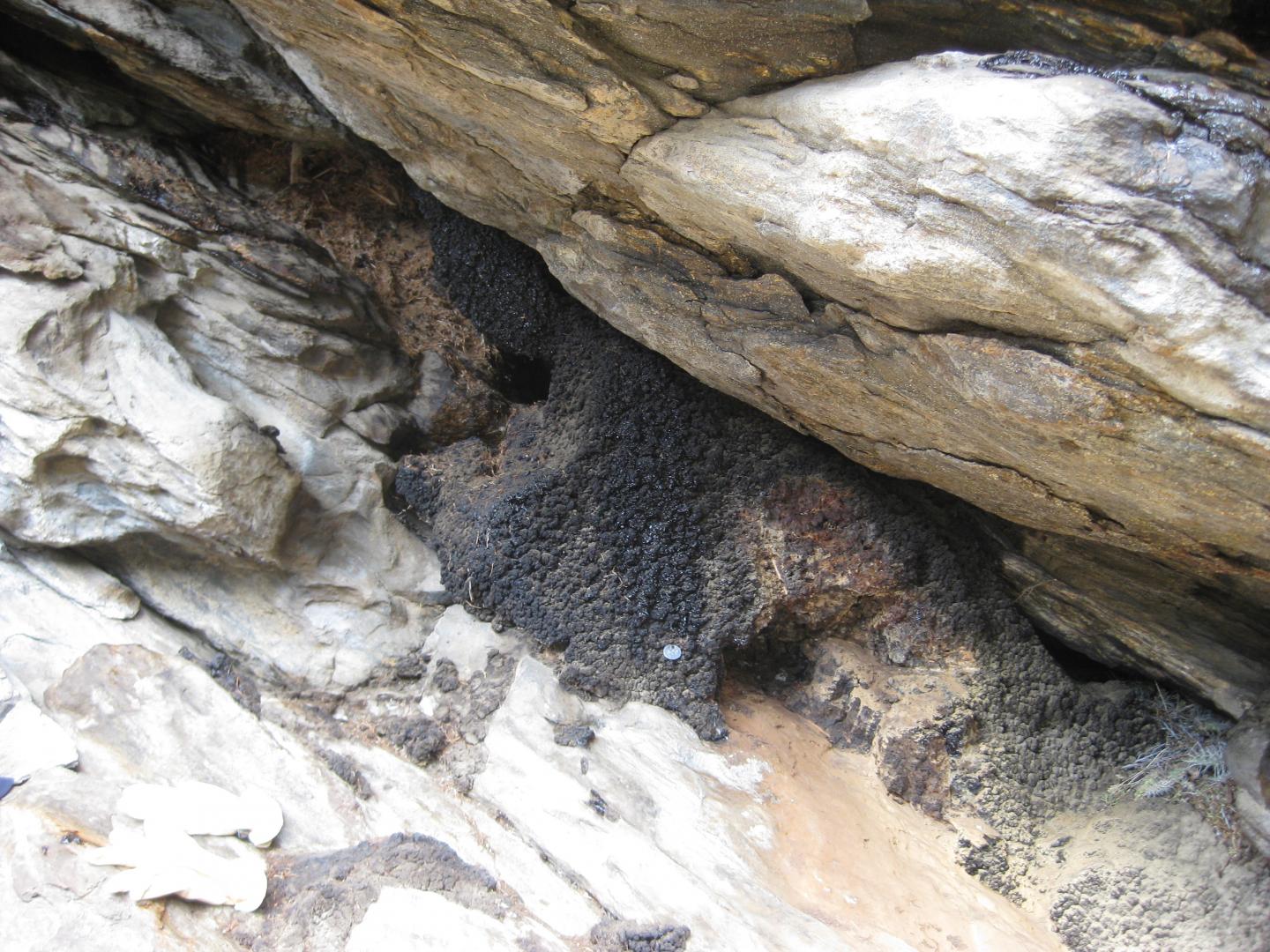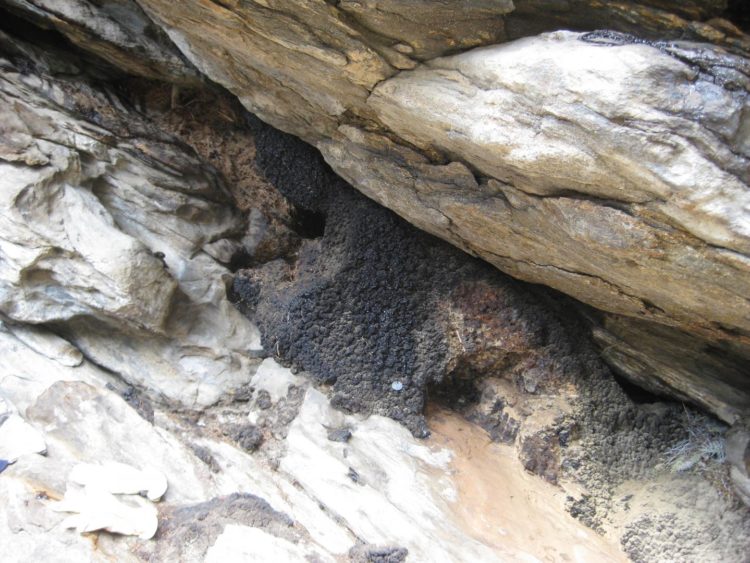New study uses environmental DNA sequencing technique to show ecological changes since last Ice Age

Credit: © Julio Betancourt
New work shows how using next-generation DNA sequencing on ancient packrat middens–nests made out of plant material, fragments of insects, bones, fecal matter, and urine–could provide ecological snapshots of Earth’s past. Published today in the journal Ecology and Evolution, the study may pave the way for scientists to better understand how plant communities–and possibly animals, bacteria, and fungi as well–will respond to human-caused climate change.
“Rodent middens are powerful tools in paleoecology,” said Michael Tessler, a postdoctoral fellow at the American Museum of Natural History. “We wanted to see how we could take this invaluable resource and expand its use to give us a big-picture view of what life in the Americas was like 1,000, 10,000, or even 30,000 years ago, and measure how it has changed in the time since then.”
Packrats (Neotoma spp.) are long-tailed nocturnal rodents that create nests out of plant materials in dry caves and crevices. Their sticky, viscous urine helps the nests to bind together into a solid mass, capable of being preserved for tens of thousands of years–some nests even date to beyond the last ice age. These plant-rich deposits–called middens, which also can contain insects, bones, and other materials the packrats habitually collect–are found in arid parts of North America. Because the foraging range of these small rodents is limited, the contents of packrat middens represent the local environment at the time the material was gathered, providing clues about past climates and environments. Since 1960, more than 2,000 ancient packrat middens from western North America have been analyzed for fossil contents and archived.
“Midden contents are so well preserved that fragments of ancient DNA can be extracted and analyzed across millennia,” said Rob Harbert, an assistant professor at Stonehill College who conceived of this study when he was a postdoc at the Museum. “They have been used to identify an extinct ground sloth preserved in southern Argentina, tell us about the history of bighorn sheep in California, and provided evidence of papillomavirus infection in packrats over the last 27,000 years. Because of their dense distribution, fossil middens in the Americas offer the chance to genetically profile entire communities through time and space, but first, we need to improve the way we analyze data from these deposits–the principal aim of this study.”
The researchers analyzed ancient DNA from 25 packrat midden samples between 300 and 48,000 years old from the North American Packrat Midden Collection at the University of Arizona’s Tree Ring Laboratory. The samples come from two locations: City of Rocks National Reserve in south-central Idaho, and Guadalupe Canyon in Northern Baja California, Mexico. These two sites span the range of current climatic conditions across which North American packrat middens are preserved and have been studied.
The researchers explored the use of two next-generation sequencing techniques to compare the DNA: amplicon, during which the same gene is sequenced from every sample, and shotgun, which randomly selects DNA fragments to sequence. They decided to focus on the shotgun technique for this study, finding that packrat middens up to 32,000 years old contain recoverable DNA that is consistent with fossils found in these deposits. As expected, a large portion of this DNA is bacterial, but between 20-40 percent is classified as belonging to eukaryotic organisms–those whose cells have a nucleus–including plants like grasses, pines, junipers, daisies, and roses, as well as a small number of vertebrates, including insects and fungi. Viruses were also present in small quantities.
Although this study underscores the promise of deep DNA sequencing to illuminate previous ecosystems, a great deal of progress is required to make the work more accurate. Since shotgun sequences random fragments of DNA, it requires researchers to have a strong database they can use to match the sequences to an organism. If the data for that organism do not exist, scientists only get the closest match, or no match at all. Because of this, and DNA degradation, the researchers say that they were only able to definitively match the DNA fragments to the family level and were unable to match it to genus or species groupings.
“As the costs of DNA sequencing continue to decrease and computational power increases, the prospects for using this technique will greatly improve,” Harbert said. “Further investigation into the taxonomic composition of middens could refine our understanding of the timeline of past climate change, species migration, and extinction, and this will better inform the study of the effects of current and future climate change.”
###
Other authors on this study include Grace Moore from Smith College, who led the study at the Museum through the National Science Foundation’s Research Experiences for Undergraduates (REU) program; Seth Cunningham from the Museum; and Julio Betancourt from the United States Geological Survey.
This work was funded in part by the Gerstner Family Foundation and the National Science Foundation’s REU program, award # 1358465.
Ecology and Evolution study: https:/
ABOUT THE AMERICAN MUSEUM OF NATURAL HISTORY (AMNH)
The American Museum of Natural History, founded in 1869 and currently celebrating its 150th anniversary, is one of the world’s preeminent scientific, educational, and cultural institutions. The Museum encompasses 45 permanent exhibition halls, including those in the Rose Center for Earth and Space plus the Hayden Planetarium, as well as galleries for temporary exhibitions. It is home to New York State’s official memorial to Theodore Roosevelt, a tribute to Roosevelt’s enduring legacy of environmental conservation. The Museum’s approximately 200 scientists draw on a world-class research collection of more than 34 million artifacts and specimens, some of which are billions of years old, and on one of the largest natural history libraries in the world. Through its Richard Gilder Graduate School, the Museum grants the Ph.D. degree in Comparative Biology and the Master of Arts in Teaching (MAT) degree, the only such free-standing, degree-granting programs at any museum in the United States. Annual on-site attendance has grown to approximately 5 million, and the Museum’s exhibitions and Space Shows can be seen in venues on six continents. The Museum’s website, digital videos, and apps for mobile devices bring its collections, exhibitions, and educational programs to millions more around the world. Visit amnh.org for more information.
Media Contact
Kendra Snyder
[email protected]
212-496-3419
Original Source
https:/
Related Journal Article
http://dx.





